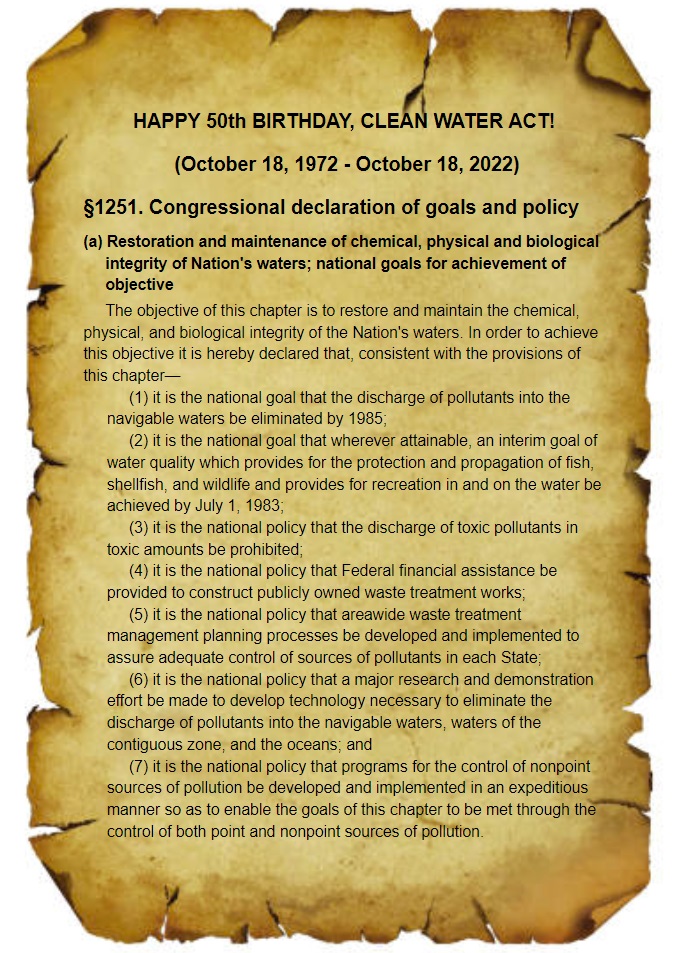From Clean Water to Clean Watersheds: The Clean Water Act at 50, with Considerations for the Next 50 Years
By LRWP Board President Heather Fenyk, Ph.D., AICP/PP
Today, October 18, 2022, marks the 50th anniversary of the Clean Water Act (CWA). To be sure, we owe a debt of gratitude to the shapers of the 1972 CWA for creating a law that significantly stemmed the flow of noxious point source pollutants into the nation’s waters. While we celebrate the successes of this seminal legislation, it is important to acknowledge the still unmet mandate of the CWA to bring about drinkable, fishable, swimmable waters. Water pollution remains a profound problem, with more than forty-seven thousand US waters still impaired. This includes every single stream, brook and river in the Lower Raritan Watershed. The major source of pollution into waters US and globally? Non-point source runoff from farm fields and the hardscape surfaces of our developed landscapes.
The LRWP believes we must chart a new path to meet drinkable, fishable, swimmable goals in the next 50 years:
In terms of strategy, centering the health of watersheds in environmental policymaking is key to realizing healthy waters.
This strategy must include integrated watershed management approaches that: 1) minimize impacts of land uses and development on waterways (good stormwater management is a start, however it does not go far enough as preventive practice); 2) require wastewater and stormwater be managed as assets; and 3) center the hydrologic cycle and aquatic systems in maintaining and restoring habitat connectivity.
The LRWP knows it is not our waterways that need to be cleaned so much as we must fix our lands to reduce polluted runoff into our waters. We see this in our water quality data: samples captured during drought weeks show lower pathogens than samples captured during wet day monitoring. And what happens after days of consistent downpours, as during the first week of October? Pathogen counts on our final monitoring session for 2022 on October 6 were the worst of the season. The LRWP invites you to join us to see first hand these connections between land use, engineered hydrologic flows, and water quality during our October 30th field session “Introduction to Urban Stream Health.” Watershed-themed costumes welcome!
On October 22 the LRWP will host a clean-up of the South River floodplain to recognize the 10th anniversary of SuperStorm Sandy. Reflecting on the impact of this storm we recall the catastrophic failure of Middlesex County Utilities Authority’s centralized sewage treatment facility. Sandy-related failure of the MCUA facility resulted in direct point source discharge of hundreds of millions of raw, untreated sewage into our waters. Observing how MCUA continues to discharge treated sanitary sewage into the Raritan River gives us pause. A holistic watershed management approach views wastewater as an asset, with water reclamation and reuse closing the loop between water supply and wastewater disposal. Setting an agenda for clean water for the next 50 years we must prioritize these better ways to clean up our waterways while meeting other sustainability goals.

